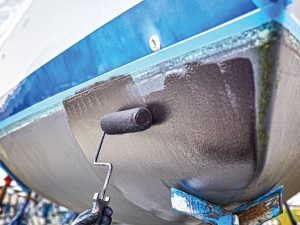The skill of sailing upwind, often referred to as beating or tacking, is one of the most challenging and rewarding techniques in sailing. To sail upwind efficiently, you need a mix of knowledge, intuition, and experience. Fortunately, you can learn to master these principles and techniques, turning a seemingly insurmountable task into a pleasure cruise.

Understanding the Basics of Sailing Upwind
Before you hoist your sails and venture into the complex world of upwind sailing, it’s essential to understand some fundamental principles. These basics lay the groundwork for more advanced techniques and help to ensure a rewarding experience on the water.
The Physics of Sailing
At the heart of sailing is an intriguing balance between aerodynamic and hydrodynamic forces. When your boat sails close to the wind (upwind), it navigates at a slight angle, allowing the sails to generate lift like an airplane wing. This lift is what propels your boat forward despite the opposing wind.
Wind Direction: True Wind vs. Apparent Wind
Understanding wind is crucial for efficient upwind sailing. There are two types of wind that sailors must consider:
- True Wind: The wind that you feel when standing still, it has a consistent direction and speed.
- Apparent Wind: This is the wind perceived on the moving vessel. It is the result of the true wind combined with the wind created by the boat’s own movement.
When sailing upwind, sailors rely on the apparent wind. The art of it involves adjusting your sails and course based on changes in the apparent wind.
Equipment Preparation for Upwind Sailing
Proper equipment is critical for successful upwind sailing. Ensuring that your boat and sails are up for the challenge can make a world of difference.
Quality Sails Make a Difference
Sails are critical when it comes to sailing upwind. Your sails should be in good condition, made of quality material, and designed for maximum efficiency.
- Shape and Rigidity: Modern sails are made to hold their shape under pressure. A tightly stretched sail will perform better than one that is slack and fluttery.
- Material: Durable, lightweight materials diminish wear and tear, aiding performance.
Mast and Rigging
A well-adjusted rig can significantly influence your upwind performance:
- Rig Tension: Proper tension in your rigging is crucial. Loose wires will affect your ability to maintain the necessary sail shape.
- Mast Position: A straight mast is essential for optimal sail performance. Consider periodic checks and adjustments based on prevailing conditions.
Techniques for Sailing Upwind
Once the foundational understandings and preparations are in place, you are ready to engage in effective upwind sailing techniques. Mastering these techniques is key to improving your sailing efficiency and enjoyment.
Setting the Right Course: Close-Hauled and The No-Go Zone
When sailing upwind, your direction must lie between directly into the wind and at roughly forty-five degrees on either side. This restricted segment is known as the “no-go zone,” and a fundamental part of upwind sailing is to sail as close to this zone without entering it, defined as sailing close-hauled.
- Close-Hauled: This is when you sail the vessel as close to the wind as possible, achieving the highest upwind efficiency. All sails will be tightly trimmed.
- Tacking: You’ll need to periodically change directions by tacking, which involves turning the boat through the wind to maintain your upwind heading while avoiding the no-go zone.
Sail Trim and Shape Adjustments
Sail trim is about finding that perfect balance between windward and leeward performance:
- Sheeting In: Pulling in the sails tightens them, allowing for better lift and forward propulsion.
- Adjusting the Sail Shape: Change the sail shape using telltales, flattening it in heavy winds by using the boom vang or Cunningham, or adding curvature to capture more wind in lighter conditions.
Balancing the Helm
A balanced helm ensures you can maintain your course without excessive steering, which can slow the boat down:
- Weather Helming: This occurs when the boat wants to turn into the wind. Ideally, you want a slight weather helm that provides a natural balance.
- Reader Tip: Adjusting the sail trim, weight distribution across the boat, and rudder use can balance your helm effectively.
Using Telltales
Telltales are small ribbons or yarn pieces attached to the sails and shrouds, offering insight into the airflow over them:
- Leeward Telltales: These should stream straight back, indicating effective airflow.
- Windward Telltales: Luffing telltales on the windward side suggest the sail should be trimmed in tighter.
Navigational Considerations
While achieving the art of upwind sailing, navigational skills will aid in steering efficiently and safely.
Plotting Your Tack: Stay on Course
An efficient sailing course involves plotting your tacks strategically to reach your destination:
- Tack Angles: Plan your tacks to progress upwind with maximum efficiency. Too many tacks will slow progress, whereas infrequent tacking may lead to drifting off course.
- Course Adjustments: Use visual landmarks or navigational aids to keep track of your progress.
Understanding Seastates and Currents
Water conditions can affect your upwind sailing:
- Waves: Adjust your technique based on wave heights and spacing. Smooth water allows for tighter tacks, while chop requires adjustments for comfort and speed.
- Currents: Account for the current’s influence on your trajectory and speed over the ground, as opposed to through the water alone.
Safety Considerations During Upwind Sailing
Safety is paramount, particularly when facing the challenges of upwind navigation. Following safety guidelines ensures not only your wellbeing but also that of your crew.
Weather Awareness and Forecasting
Keeping a close eye on weather conditions can alert you to impending changes that may affect your sail:
- Weather Forecasts: Keep updated with forecast models before setting sail, but also remain vigilant of real-time changes and signs in the environment.
- Wind Intensity: Be prepared for shifting wind strengths that can affect your course and require immediate sail adjustments.
Crew Communication and Preparedness
A well-informed crew can make real-time adjustments seamlessly and ensure everyone’s safety:
- Role Assignments: Clear assignment of tasks like steering, trimming, and lookout will smooth operations.
- Drills and Emergency Procedures: Regular drills on tacking and emergency procedures ensure readiness for any scenario.
Equipment and Safety Gear
The right equipment can prevent a number of potential dangers on the water:
- Life Jackets: Choose coast guard-approved jackets for every member onboard.
- Harnesses and Lines: In strong conditions, use harnesses to secure crew, and keep lines clear of tangles and within reach for quick adjustments.
Advanced Techniques for Upwind Efficiency
Once you’ve mastered the basics, expand your skills with advanced techniques to enhance upwind efficiency further.
Using the Wind Shifts
Experienced sailors exploit wind shifts for better positioning and speed:
- Headers and Lifts: A header is when the wind direction shifts, requiring a tack to maintain the course. A lift makes your point of sailing even closer to your intended upwind goal. Anticipate and plan your maneuvers to maximize these wind shifts.
Lift and Drift Tactics
Utilize variations in sea and wind conditions:
- Lift Strategy: Harness lifted winds to sail closer to your goal.
- Drift Approach: Allow for beneficial currents to assist your path and conserve energy and effort when sailing into heavier wind fronts.
Sailing by Feel: Intuitions and Adaptations
Experienced sailors often go beyond traditional methods by sailing ‘by feel’:
- Sensory Adjustments: Pay attention to the bow’s angle and responsiveness, as well as changes in sail tension and boat speed.
- Anticipation and Adaption: Learn to anticipate changes in conditions and adapt promptly to optimize performance, whether it’s adjusting sails or altering the course.

Conclusion
Sailing upwind efficiently is a delicate dance between understanding, preparation, and execution. With an appreciation of the underlying principles, proper equipment, and adherence to safety practices, combined with the mastery of core techniques, you can transform the potential confrontation with the wind into a harmonious journey. Eventually, experience translates learning into intuition, allowing you to intuitively feel the boat’s needs and make real-time adjustments for the best sailing experience.
Embracing these insights will not only enhance your skills but also enrich your sailing adventures, instilling a deeper connection with the art of navigating the waters. Now, it’s time for you to set sail and let the winds guide your newfound expertise on your upwind journeys.





